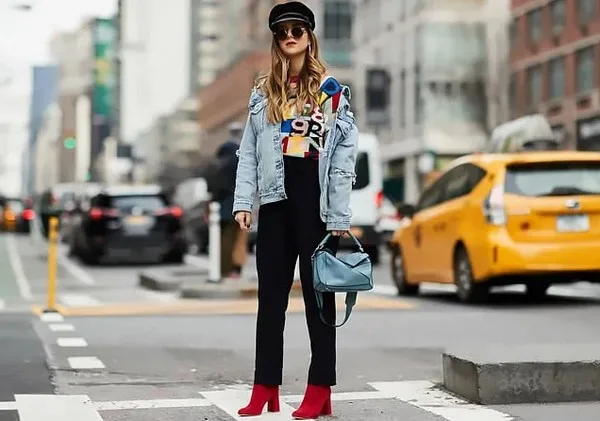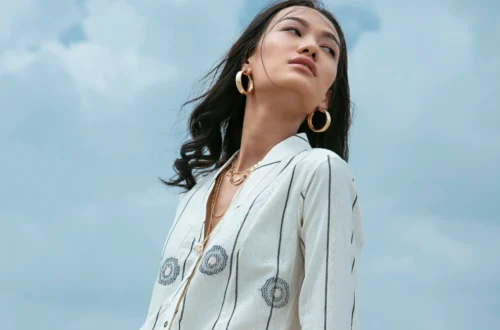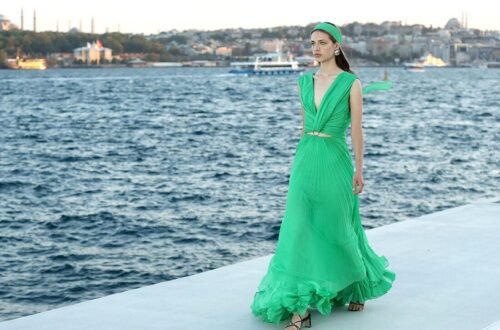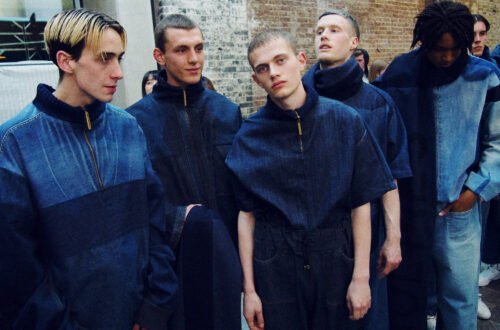Hey there, fashion enthusiast. Picture this: I’m strolling through the bustling streets of New York a few years back, dodging coffee spills and tourists, when I spot this guy in oversized jeans, a vintage band tee, and sneakers that look like they’ve seen better days. Yet, he owns the look completely. That’s street style for you—raw, real, and full of personality. It’s not about following rules; it’s about making them. In this article, we’ll dive deep into what makes street style tick and why it’s a powerhouse in the fashion world. As someone who’s chased trends from thrift shops to fashion weeks, I’ll share stories and insights to show how this urban vibe shapes everything from runways to your closet.
What is Street Style Fashion?
Street style fashion is all about the outfits born on city sidewalks, not in fancy design studios. It’s casual, individualistic clothing inspired by everyday people, often mixing urban culture with personal flair. Think hoodies layered over dresses or sneakers with suits—it’s effortless and authentic.
This style celebrates self-expression without the pressure of perfection. Unlike high-end couture, street fashion thrives on accessibility and creativity from the ground up. It’s where trends start bubbling before they hit the big leagues.
Origins of Street Style
Street style traces back to post-World War II eras when youth culture exploded in urban hubs like New York and London. Kids started mixing surplus military gear with bold prints, creating looks that screamed rebellion. It wasn’t just clothes; it was a statement against the stuffy norms of the time.
Over time, influences from skateboarding, hip-hop, and punk scenes added layers. I once chatted with an old-school skater who swore his baggy pants were purely practical—until designers noticed and turned them into must-haves. It’s that organic spark that keeps it evolving.
The Evolution of Street Style in Fashion
Street style has morphed from niche subcultures to a global phenomenon influencing billion-dollar brands. What began as underground vibes in the 1970s now graces luxury runways, blending comfort with edge. It’s a testament to how everyday wear can redefine elegance.
This shift happened as social media amplified real-people looks, turning influencers into trendsetters. Brands like Supreme and Off-White capitalized on it, proving streetwear isn’t just casual—it’s cultural currency. The fusion keeps fashion fresh and inclusive.
From Subculture to Mainstream Influence
Subcultures like hip-hop in the 1980s pushed street style into the spotlight with bold chains and tracksuits. By the 2000s, it infiltrated high fashion, with designers like Virgil Abloh bridging the gap. Suddenly, hoodies were haute couture.
Mainstream adoption brought challenges, like dilution of authenticity, but it also democratized style. Remember when luxury labels started dropping sneakers? That was street style’s victory lap, making fashion fun for everyone, not just elites.
Types of Street Style Fashion
Street style isn’t one-size-fits-all; it’s a spectrum of vibes reflecting diverse influences. From athletic ease to punk rebellion, each type lets you channel your mood. Here’s a breakdown to inspire your next outfit adventure.
- Hip-Hop Style: Rooted in urban music scenes, it features baggy jeans, graphic tees, and chunky jewelry. It’s bold and expressive, often nodding to cultural icons like Run-DMC.
- Athleisure: Blends sportswear with daily outfits—think yoga pants with blazers. Comfort meets chic, perfect for busy days without sacrificing looks.
- Punk-Inspired: Edgy with ripped denim, leather jackets, and spikes. It screams attitude, ideal for those who love a rebellious twist.
- Preppy Street: Mixes classic elements like polos with urban twists, such as oversized fits. It’s polished yet playful, bridging schoolyard nostalgia and city streets.
Global Influences on Street Style
Street style varies wildly by location, absorbing local flavors like a sponge. In Tokyo, it’s futuristic with layered patterns; in Paris, it’s understated elegance with a twist. These differences highlight how culture shapes what we wear.
To visualize, check this table comparing key cities:
| City | Signature Elements | Cultural Influence |
|---|---|---|
| New York | Bold prints, sneakers, layering | Hip-hop and skate culture |
| London | Eclectic mixes, vintage finds | Punk and multiculturalism |
| Tokyo | Harajuku vibes, tech fabrics | Anime and youth innovation |
| Milan | Tailored casuals, luxury accents | High fashion heritage |
| Paris | Effortless chic, scarves, berets | Artistic and romantic roots |
This diversity enriches the global fashion tapestry, showing street style’s adaptability.
The Importance of Street Style in the Fashion Industry
Street style is the heartbeat of fashion, injecting real-world energy into an often elite industry. It democratizes trends, making style accessible and inspiring designers to think beyond catwalks. Without it, fashion would feel disconnected and stale.
Its economic impact is huge—streetwear alone is a multi-billion-dollar market, boosting brands and creators alike. Plus, it fosters inclusivity, letting diverse voices shine. In a world craving authenticity, street style delivers.
Influence on High Fashion Designers
High fashion often borrows from the streets, turning hoodies into runway staples. Designers like Balenciaga and Gucci remix urban elements, creating hybrid looks that sell out fast. It’s a two-way street—pun intended—keeping luxury relevant.
This crossover sparks innovation, like when Virgil Abloh brought graffiti to Louis Vuitton. I felt a thrill seeing my thrift finds echoed in couture; it blurs lines between affordable and aspirational.
Role in Social Movements and Culture
Street style has powered social change, from suffragettes’ practical dresses to Black Lives Matter tees. It’s a visual protest, amplifying messages through clothing. In tough times, it builds community and solidarity.
Culturally, it mirrors society’s pulse—think how K-pop influences global youth looks. It’s emotional too; wearing a meaningful graphic can feel empowering, like armor against the world.
Pros and Cons of Street Style in Fashion
Pros:
- Encourages individuality and creativity.
- Makes fashion affordable and inclusive.
- Drives innovation and cultural exchange.
- Boosts economic opportunities for small brands.
Cons:
- Can lead to fast fashion overconsumption.
- Risks cultural appropriation if not handled thoughtfully.
- Trends fade quickly, creating waste.
- Sometimes prioritizes hype over quality.
Street Style Trends in 2025
As we hit 2025, street style is leaning into bold colors, sustainable fabrics, and tech twists. Expect vibrant pastels on oversized silhouettes, with floral prints popping on everything from shorts to jackets. It’s playful yet practical.
Key trends include short shorts for summer vibes, polo shirts in fresh fits, and denim all over for that effortless edge. Animal prints like leopard are roaring back, adding wild flair to basics. Sustainability shines with upcycled pieces ruling the scene.
Comparison: Street Style vs. High Fashion
Street style and high fashion differ like coffee runs versus gala nights. Street is casual, affordable, and community-driven; high fashion is polished, pricey, and designer-led. Yet, they intersect—street inspires high-end, while luxury trickles down to streets.
In accessibility, street wins for everyday wear, but high fashion excels in craftsmanship. Emotionally, street feels relatable; high fashion, aspirational. Both evolve together, enriching the industry.
Where to Get Street Style Inspiration
Finding street style vibes is easier than ever. Hit up platforms like Instagram for real-time looks from cities worldwide. Blogs such as The Sartorialist capture authentic moments, while Pinterest boards overflow with outfit ideas.
For deeper dives, check Vogue’s street style galleries or local fashion weeks. External link: Explore global snaps on Vogue Street Style. Internally, our Urban Fashion Tips section has more.
Best Tools for Creating Street Style Looks
Building your street style arsenal? Apps like Depop for thrifted gems or Stylebook for virtual closets make it simple. Tools such as Canva help design custom graphics for tees.
For shopping, try ASOS for affordable drops or StockX for hyped sneakers. External: Shop trends at ASOS. These keep your looks fresh without breaking the bank.
People Also Ask
Drawing from Google searches, here are common questions about street style fashion with quick answers.
What is street style fashion? Street style is casual, urban-inspired clothing emerging from everyday people, emphasizing individuality over trends.
What is the history of street style in fashion? It started post-WWII with youth rebellions in cities, evolving through subcultures like punk and hip-hop into mainstream influence.
How has street style influenced high fashion? Street elements like sneakers and hoodies now appear on runways, with designers drawing from urban culture for fresh ideas.
Who are the best street style influencers? Top ones include Aimee Song, Pernille Teisbaek, and Johnny Cirillo for inspiring, relatable looks.
FAQ
Why is street style important in the fashion industry? It brings authenticity and innovation, influencing designers and making fashion more inclusive and culturally relevant.
How can I incorporate street style into my wardrobe? Start with basics like jeans and tees, layer creatively, and add personal touches like accessories. Thrift shops are goldmines.
What are the downsides of street style trends? They can promote fast fashion waste and sometimes lead to cultural insensitivity if trends are borrowed without respect.
Is street style only for young people? Not at all—it’s ageless, with folks up to 50 rocking it. It’s about attitude, not age.
How does sustainability fit into street style? Many embrace upcycled fabrics and ethical brands, turning eco-conscious choices into stylish statements.
Wrapping up, street style isn’t just clothes; it’s a mirror to our world, full of stories and spirit. From my own mishaps—like that time I mixed patterns and got compliments anyway—to its industry shake-ups, it’s what keeps fashion alive. Dive in, experiment, and make it yours. After all, the best trends start on the street.





